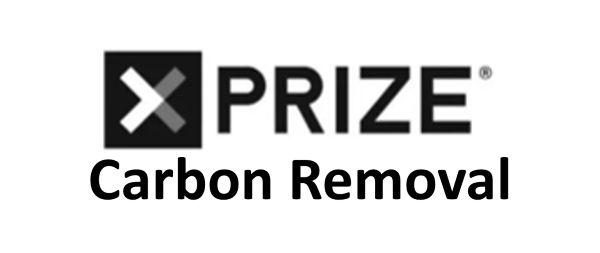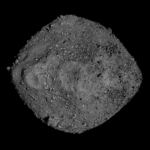Removing carbon dioxide (CO2) from the atmosphere is described as one of a number of solutions to mitigate climate change. The creators of the X Prize made CO2 removal one of their contests. The announced winners of the X Prize Carbon Removal this week shared $100 million in a contest that attracted 1,300 different applicants from 88 countries. Entries provided the judges with field-tested solutions and plans to scale them 100 to 1,000-fold for removing CO2 from the atmosphere.
It would be exciting to tell you that the results of this contest will make a significant difference to mitigate the primary cause of global warming, CO2 emissions, but unfortunately, based on a look-see at the winning, runner-up and other awardee results, these efforts appear to be a fool’s errand.
Why do I say that? The numbers don’t lie. Human activity adds more than 40 billion tons of CO2 to the atmosphere every year. The contributors include energy producers who burn fossil fuels, manufacturers who burn fossil fuel products to make cement, steel and aluminum, and forestry operations who deforest and degrade boreal and tropical rainforests with impunity. That doesn’t include the CO2 produced in building our cities and heating and cooling our homes, or the amount created from transportation.
When you look at the amount of CO2 these XPrize awardees’ technologies can eliminate based on their submissions, $100 million doesn’t appear to have bought a lot. Judge for yourself by reading about the X Prize winners:
- Mati Carbon, a Texas-based company, won the $50 million grand prize proposing enhanced rock weathering (ERW) to remove 100 million tons of CO2 cumulatively by 2040, not even annually. One hundred million tons sounds like a big number, but not when compared to 40 billion. By 2040, with CO2 emissions going up by that amount each year, we will have cumulatively increased this atmospheric greenhouse gas by 1 trillion tons. 100 million against 1 trillion is but a drop in the bucket. Consider the unaccounted for 2 trillion tons of CO2 already in the atmosphere between the start of the Industrial Revolution and 2025, and the number becomes virtually insurmountable. So, how is Mati going to get rid of CO2? It is doing this by crushing basalt and applying it to agricultural land where the calcium and magnesium within the rock enter the soil and bind with CO2 and moisture to produce bicarbonate. The bicarbonate eventually gets transported to groundwater, lakes, rivers, aquifers and the deep ocean where it can stably be stored for thousands of years.
- NetZero, a France-based company, won first runner-up, worth $15 million. Their solution removes 1,000 tons of CO2 from the atmosphere using biochar produced from tropical farm residues. NetZero demonstrated it could scale the technology to a million tons removed annually, citing an IPCC 2019 report that saw Biochar production when ramped up, removing up to 2 billion tons of the greenhouse gas each year. That’s not a trivial amount, but still only 1/40th of the amount human activity is producing annually.
- Vaulted Deep, another Texas-born company, won second runner-up, worth $8 million. The company has developed a slurry injection process that is based on fracking technology. Instead of injecting fracking fluids underground to harvest oil and gas trapped in rocks, the technology takes CO2-filled biomass waste from landfills, wastewater treatment facilities and paper mills and turns them into a slurry which gets injected into underground impermeable salt caverns. This permanently sequesters the CO2. Vaulted Deep is already operating its slurry injection technology using caverns located in Kansas and claims to have removed 14,423 tons of CO2 at a rate of 10,000+ tons per year using this technology. Scaling it would require finding additional impermeable underground storage capacity, pipelines and transportation infrastructure to deliver the tens of millions of tons of slurry to be put underground, which sounds like a tall order.
- UNDO Carbon is a Canadian entry and the winner of the third runner-up prize, worth $5 million. UNDO is harvesting wollastonite, a calcium-silicate mineral that it is using to capture CO2. Mined at three locations in North America, wollastonite is easily crushed for spreading on farm fields, and like the Mati Carbon solution, can permanently fix CO2 into the soil. In its demonstration to the XPrize committee, UNDO used 34,000 tons of wollastonite spread over 102 farms, 5,670 hectares (14,010 acres) in total, to capture and remove 1,209 tons of CO2. It projected scaling its operation to achieve a megaton of annual CO2 removal by 2031.
- Other $1 million prize winners included Planetary Technologies, a Canadian company, with what it calls Ocean Alkalinity Enhancement (OAE) technology, addingan antacid to seawater to remove atmospheric CO2. The other $1 million went to Project Hajar, an Omani company, that demonstrated direct air capture plus mineralization (DAC+M) technology to turn CO2 into solid rock.
All of these solutions to remove CO2 are early stage. To scale them to the billion-ton level will require significant investments. Even then, when all are brought to bear, without other actions by humans, the legacy of anthropogenic CO2 will remain a problem requiring tens of billions of dollars to ameliorate. That’s why dramatic changes in the way we generate energy, manufacture, farm, heat and cool, and transport ourselves are needed to solve the carbon problem.
The X Prize, however, remains undaunted in inspiring technological innovators to come up with solutions for human-generated problems and other challenges. Currently, the X Prize is formulating a contest to tackle methane (CH4), seeking solutions to prevent, capture and destroy this more potent than CO2 short-term greenhouse gas. The CH4 problem has seen a doubling of the gas in the atmosphere in the last two centuries. Although it has a short life of less than 20 years, unlike CO2, which can last a millennium, CH4 traps 90 times more heat than CO2. We are the authors of rising CH4 levels. Our farm animals, leaks from landfills, leaks and flaring by fossil fuel producers, and industrial sources all produce the gas. And now, because of global warming, melting permafrost is becoming a new potent source of this greenhouse gas. X Prize Mission Methane is still a work in progress with no official launch date as of yet. Likely, it will be another $100 million prize, and in my book is a more realistic target for us to technologically address than CO2 just based on the sheer quantities involved. That’s why I wonder why X Prize waited so long to turn this into a contest.









